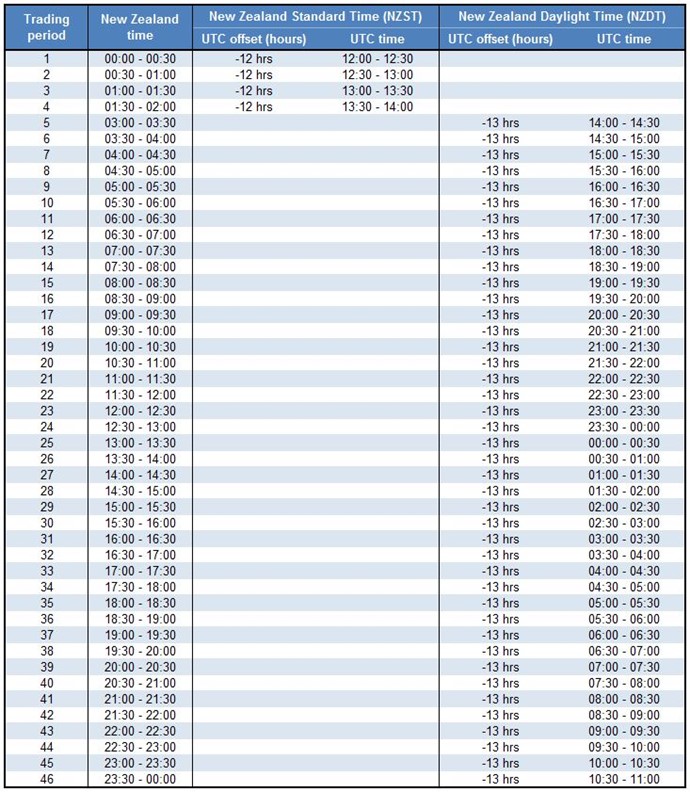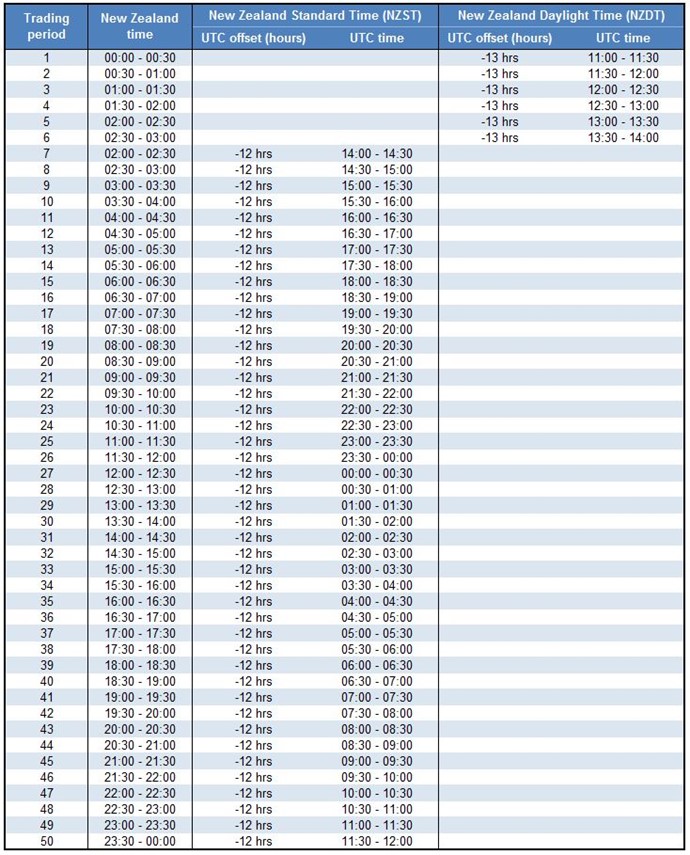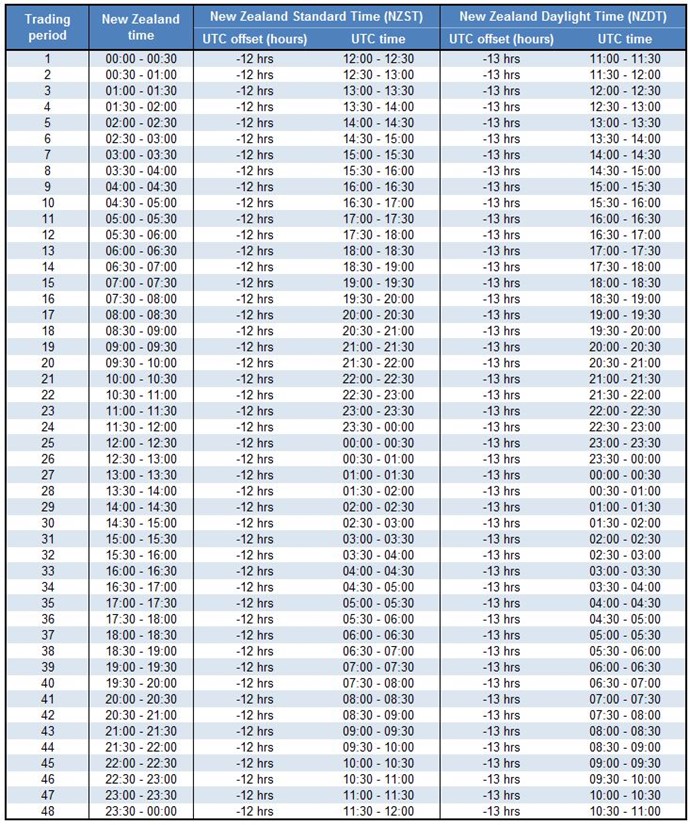Thirty-minute trading periods are central to the operation and settlement of the New Zealand wholesale electricity market. Daylight saving and the attendant adjustment of the clock twice each year can sometimes make it confusing to map times to trading period numbers.
New Zealand Standard Time (NZST) is currently defined in the Time Act 1974 as being 12 hours in advance of Co-ordinated Universal Time (UTC). Since 1974, New Zealand has also defined a Daylight Time (NZDT). NZDT is fixed as a one-hour advance on NZST and is therefore 13 hours in advance of UTC.
From time to time, the New Zealand Government may modify the configuration of the daylight saving regime. See here for additional information about daylight saving.
Daylight saving currently commences on the last Sunday in September, when 2.00am becomes 3.00am, and it ends on the first Sunday in April, when 3.00am becomes 2.00am.
Table 1: Trading periods, New Zealand time, and UTC on all days when daylight saving is neither starting nor ending
Table 2: Trading periods, New Zealand time, and UTC on the Sunday when daylight saving begins

Table 3: Trading periods, New Zealand time, and UTC on the Sunday when daylight saving ends

All three of the tables above can be found in the spreadsheet in the attached file.





